
Concept explainers
Refer to the circuit of Fig. 8.95, which contains a voltage-controlled dependent voltage source in addition to two resistors. (a) Compute the circuit time constant. (b) Obtain an expression for vx valid for all t. (c) Plot the power dissipated in the 4 Ω resistor over the range of six time constants. (d) Repeat parts (a) to (c) if the dependent source is installed in the circuit upside down. (e) Are both circuit configurations “stable”? Explain.
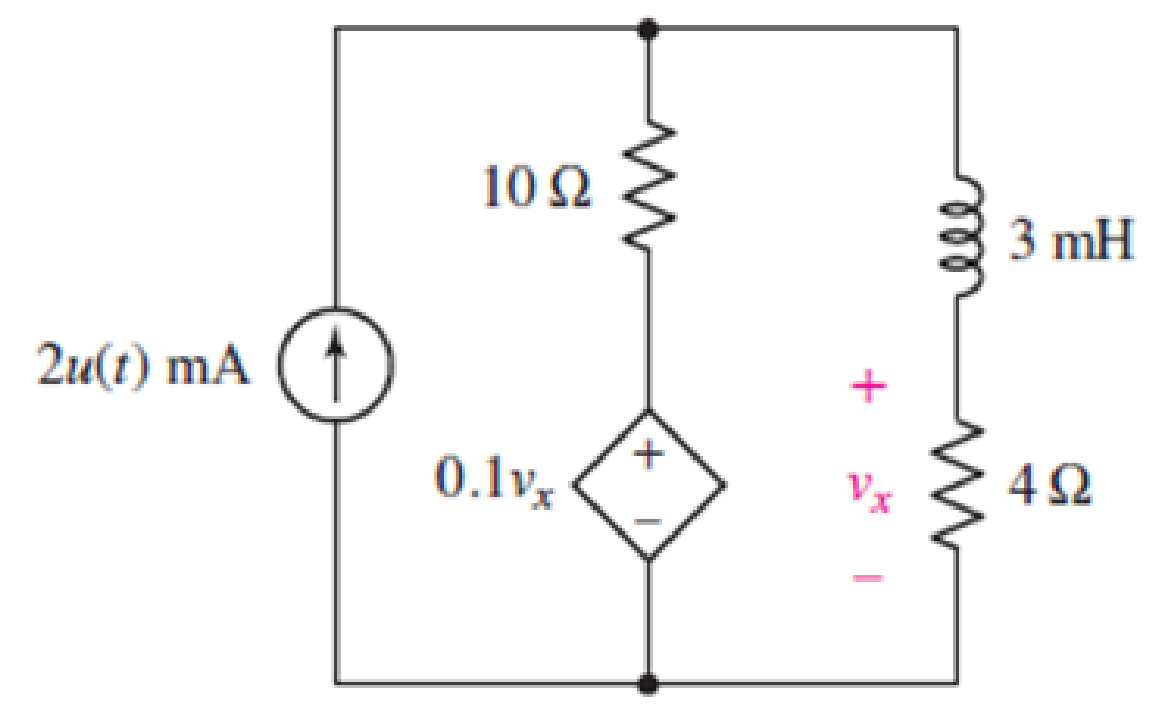
Figures 8.95
(a)
Find the circuit time constant.
Answer to Problem 76E
The time constant of the circuit is
Explanation of Solution
Formula used:
The expression for the resistance of the circuit is as follows:
Here,
The expression for the time constant of circuit is as follows:
Here,
Calculation:
To find equivalent resistance of a circuit the independent current source is replaced by open circuit and
The circuit diagram is redrawn as shown in Figure 1.
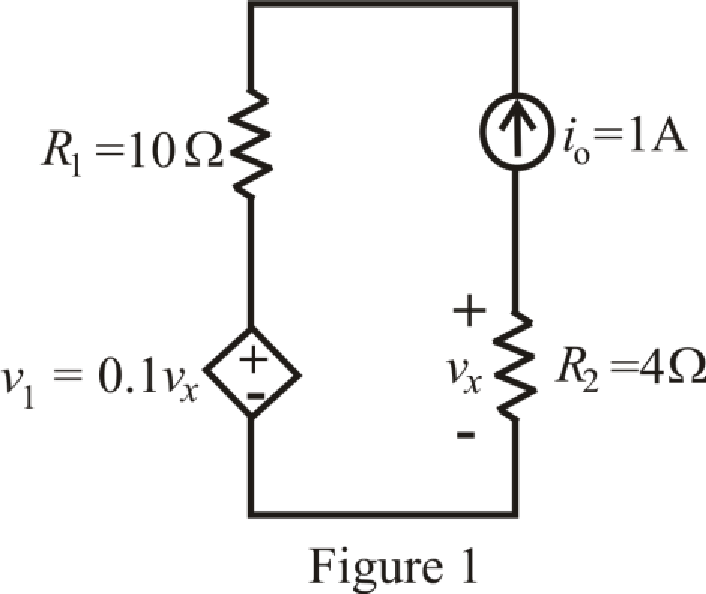
Refer to the redrawn Figure 1:
Apply KVL in mesh 1:
Here,
Substitute
The expression for voltage across the
Here,
Substitute
Substitute
Rearrange for
Substitute
So, the equivalent resistance across inductor is
Substitute
So the time constant of the circuit is
Conclusion:
Thus, the time constant of the circuit is
(b)
Obtain an expression for
Answer to Problem 76E
The expression for the voltage
Explanation of Solution
Formula used:
The expression for the final response of the circuit valid for all
Here,
Calculation:
The unit-step forcing function as a function of time which is zero for all values of its argument less than zero and which is unity for all positive values of its argument.
Here,
The independent current source is:
Substitute
The current through
The
So, the value of the current flowing through the inductor for
The inductor does not allow sudden change in the current.
So,
Therefore, the current flowing in the circuit for
Substitute
So, the current flowing through the
The circuit diagram is redrawn as shown in Figure 2 for
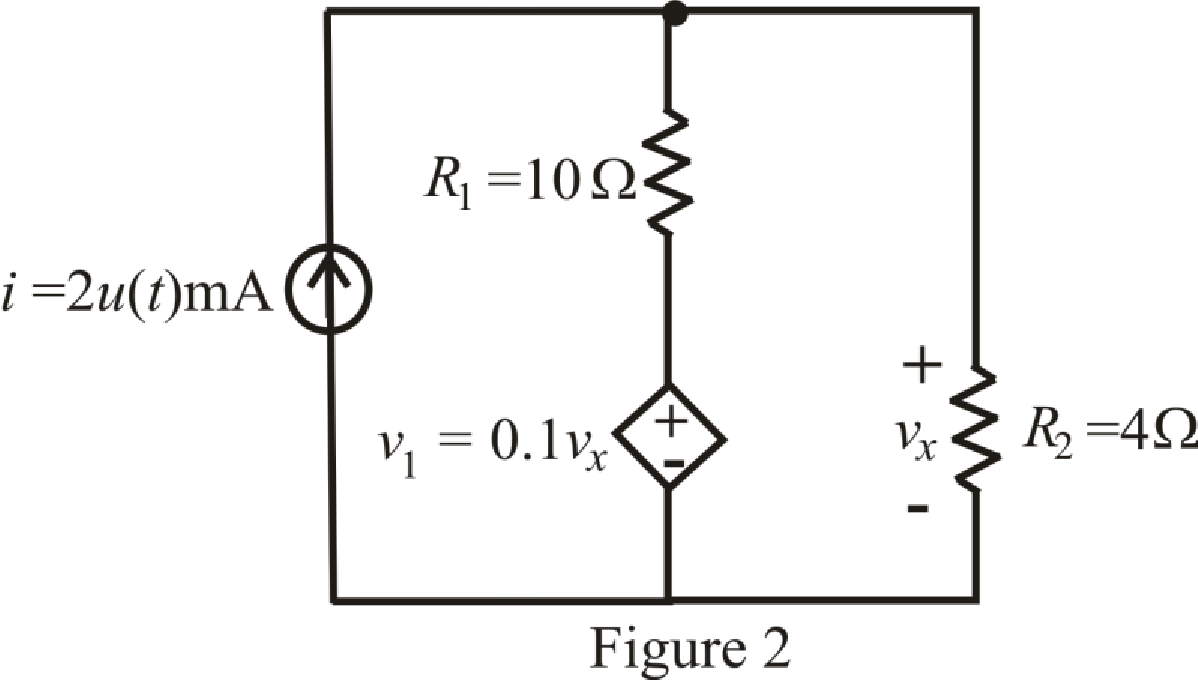
Refer to the redrawn Figure 2:
Apply KCL in the circuit:
Substitute
Rearrange for
The expression for the current flowing through
Here,
Substitute
So, the current flowing through
Substitute
The expression for the voltage across the
Substitute
Conclusion:
Thus, the expression for the voltage
(c)
Plot the power dissipated in the
Explanation of Solution
Given data:
The range of the time is six time constant.
Formula used:
The expression for the power dissipated in the
Here,
Calculation:
Substitute
The time constant of the circuit is
The different value for the power dissipated in the
The graph for power dissipated in the
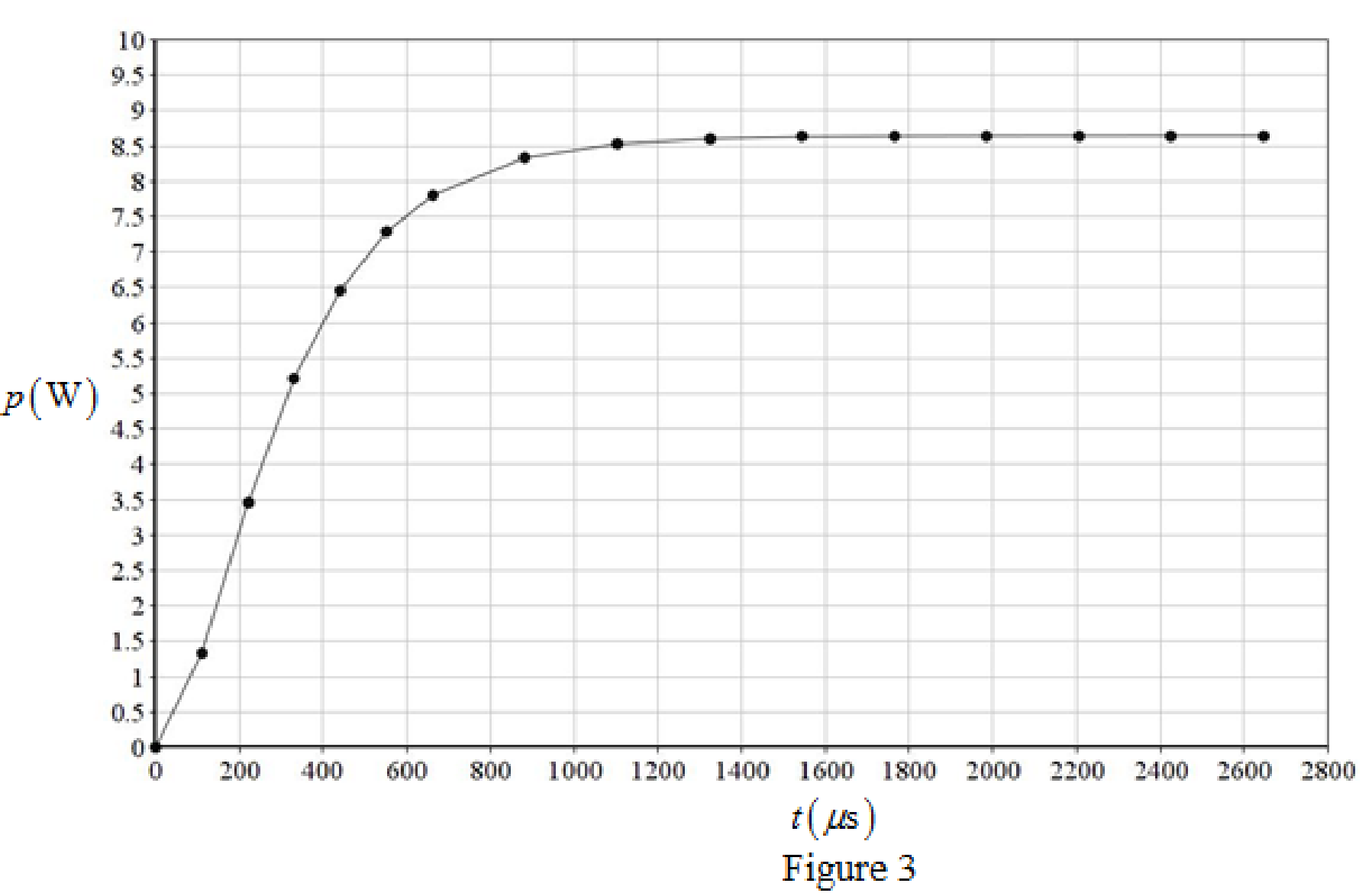
Calculation:
Thus, the graph for power dissipated in the
Conclusion:
(d)
Repeat parts (a) to (c) if the dependent source is installed in the circuit upside down.
Explanation of Solution
Calculation:
To find equivalent resistance of a circuit the independent current source is replaced by open circuit and
The circuit diagram is redrawn as shown in Figure 4:
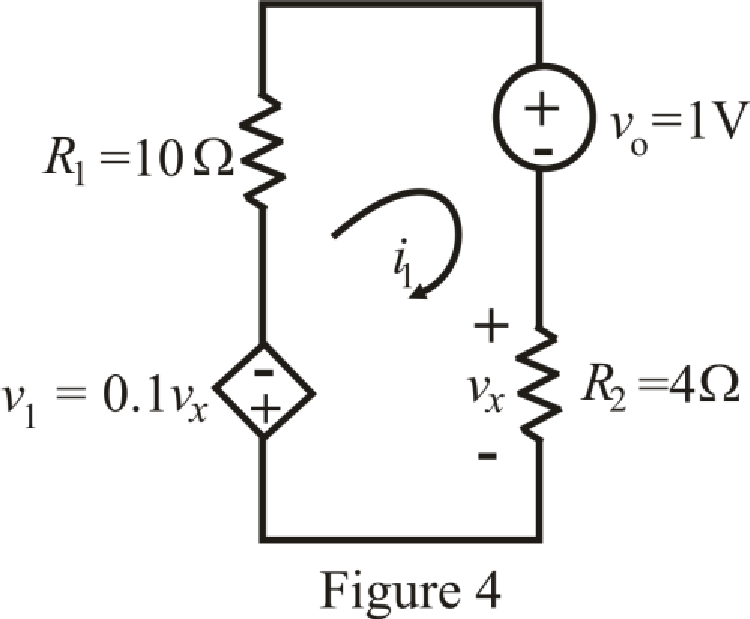
Refer to the redrawn Figure 4:
Apply KVL in mesh 1:
Here,
Substitute
The expression for voltage across the
Here,
Substitute
Substitute
Rearrange for
Substitute
So, the equivalent resistance across inductor is
Substitute
So, the time constant of the circuit is
The unit-step forcing function as a function of time which is zero for all values of its argument less than zero and which is unity for all positive values of its argument.
Here,
The independent voltage source is:
Substitute
The current through
The
So, the value of the current flowing through the inductor for
The inductor does not allow sudden change in the current.
So,
Therefore, the current flowing in the circuit for
Substitute
So, the current flowing through the
The circuit diagram is redrawn as shown in Figure 5 for
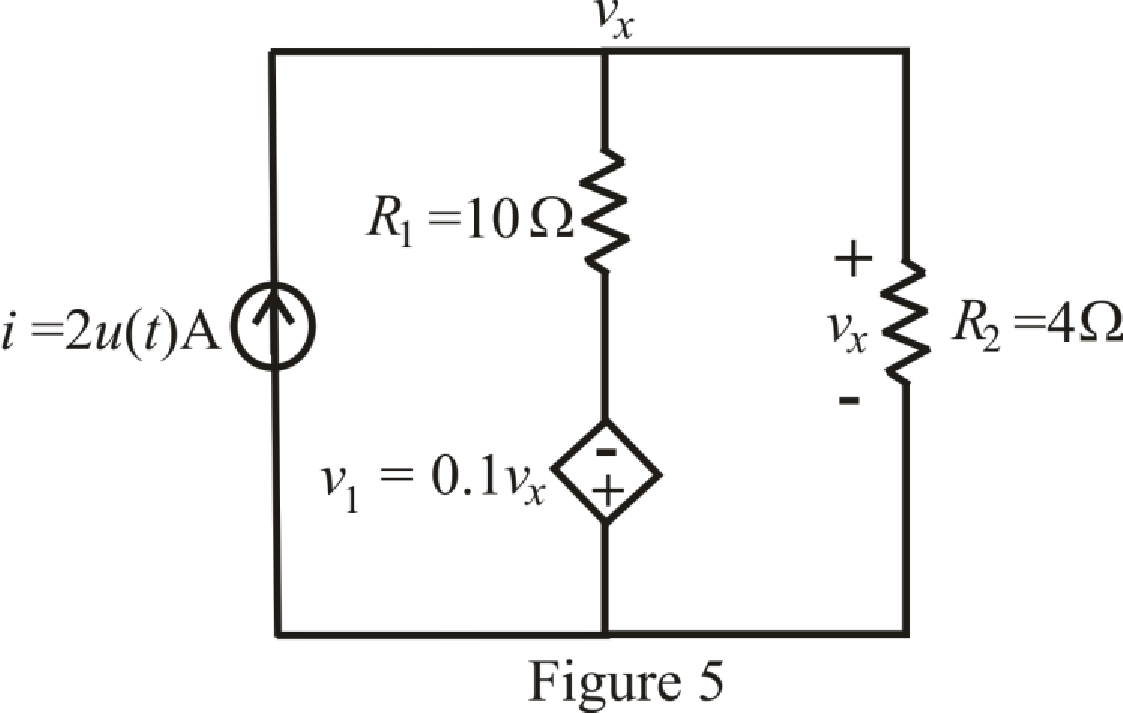
Refer to the redrawn Figure 5:
Apply KCL in the circuit:
Substitute
Rearrange for
The expression for the current flowing through
Here,
Substitute
So, the current flowing through
Substitute
The expression for the voltage across the
Substitute
So, the expression for the voltage
Substitute
The time constant of the circuit is
The different value for the power dissipated in the
The graph for power dissipated in the
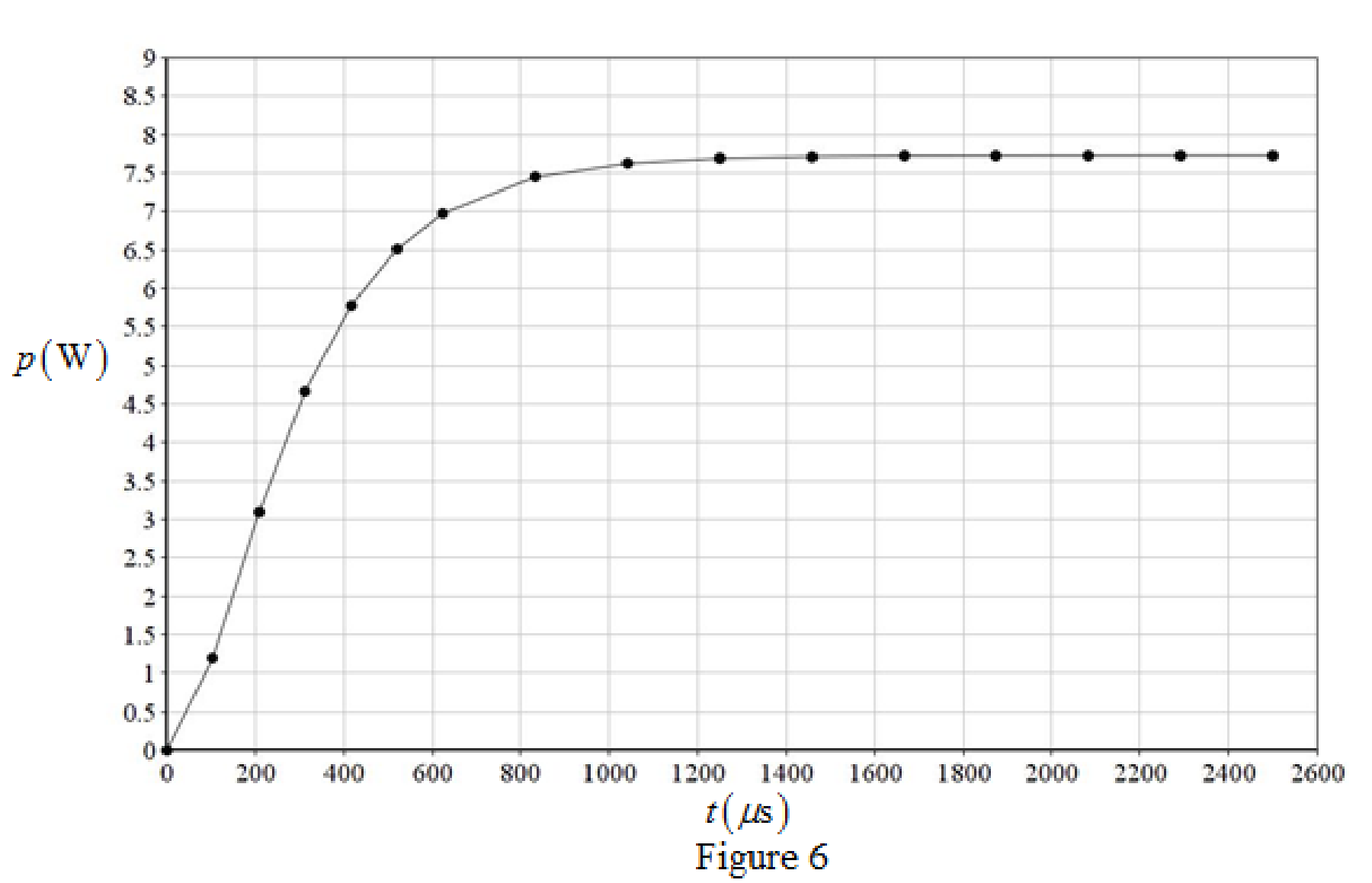
Conclusion:
Thus, the time constant of the circuit is
(e)
Are both circuit configurations “stable”? Explain.
Answer to Problem 76E
Both circuit configurations are “stable”.
Explanation of Solution
Refer to Figure 3 and Figure 6:
The response (output power dissipated in the
So, both circuit configurations “stable”.
Conclusion:
Thus, both circuit configurations are “stable”.
Want to see more full solutions like this?
Chapter 8 Solutions
ENGINEERING CIRCUIT...(LL)>CUSTOM PKG.<
Additional Engineering Textbook Solutions
Thinking Like an Engineer: An Active Learning Approach (4th Edition)
Fluid Mechanics: Fundamentals and Applications
INTERNATIONAL EDITION---Engineering Mechanics: Statics, 14th edition (SI unit)
Vector Mechanics for Engineers: Statics and Dynamics
Elementary Surveying: An Introduction To Geomatics (15th Edition)
Starting Out with Programming Logic and Design (5th Edition) (What's New in Computer Science)
- The efficiency of a motor is always low when it operates at 10 percent of its nominal power rating. Explain.arrow_forwardA dc motor connected to a 240 V line pro- duces a mechanical output of 160 hp. Knowing that the losses are 12 kW, calculate the input power and the line current.arrow_forwardA 115 V dc generator delivers 120 A to a load. If the generator has an efficiency of 81 percent, calculate the mechanical power needed to drive it [hp].arrow_forward
- A machine having class B insulation attains a temperature of 208°C (by resistance) in a torrid ambient temperature of 180°C. a. What is the temperature rise? b. Is the machine running too hot and, if so, by how much?arrow_forward1 Name the losses in a dc motor. 2 What causes iron losses and how can they be reduced? -3 Explain why the temperature of a machine increases as the load increases.arrow_forward20. A tractor weighing 14 kN with a wheel base of 3m carries an 8 kN load on its rear wheel. Compute the maximum bending moment and shear when crossing a 4.5 span. Consider the load only at the wheels.arrow_forward
- A 110-V, three-phase, Y-connected, 8 pole, 48-slot, 6000-rpm, double-layer wound chronoun anı vonorotor boo 10 +1 urn or oilarrow_forward-7 Name some of the factors that contribute to the deterioration of organic insulators. -8 A motor is built with class H insulation. What maximum hot-spot temperature can it withstand?arrow_forwardCalculate the full-load current of a 250 hp, 230 V dc motor having an efficiency of 92 percent.arrow_forward
- Assignment #2 A 110-V, three-phase, Y-connected, 8 pole, 48-slot, 6000-rpm, double-layer wound, synchronous generator has 12 turns per coil. If one side of the coil is in slot 1, the other side is in slot 6. There are 4 parallel paths. When the generator delivers the rated load at a line voltage of 110 V, the voltage regulation is 5%. What is the flux per pole? Draw two consecutive phasegroups of one of the phase windings and connect them (a) in series and (b) in parallel showing the Start (S) and Finish (F) of both connections. (A separate drawing for each connection)arrow_forward3-4 Transmissiva Live of 120km has R= 0.2 ~2/15 X= 0.8 -2/km Y = 15H/6 5/km The line is supplies a load of 45 kV, SOMW, 0.8 lead p.f find sending voltage, Sending Current p.f. Sanding Voltage Regulation ⑨Voltage 5 Ⓒ charching coming! изу usy π cct लेarrow_forwardA (medium) single phase transmission line 100 km long has the following constants : Resistance/km = 0.25 Q; Susceptance/km = 14 × 10° siemen ; Reactance/km = 0.8 Receiving end line voltage = 66,000 V Assuming that the total capacitance of the line is localised at the receiving end alone, determine (i) the sending end current (ii) the sending end voltage (iii) regulation and (iv) supply power factor. The line is delivering 15,000 kW at 0.8 power factor Lead Draw the phasor diagram to illustrate your calculations.arrow_forward
 Introductory Circuit Analysis (13th Edition)Electrical EngineeringISBN:9780133923605Author:Robert L. BoylestadPublisher:PEARSON
Introductory Circuit Analysis (13th Edition)Electrical EngineeringISBN:9780133923605Author:Robert L. BoylestadPublisher:PEARSON Delmar's Standard Textbook Of ElectricityElectrical EngineeringISBN:9781337900348Author:Stephen L. HermanPublisher:Cengage Learning
Delmar's Standard Textbook Of ElectricityElectrical EngineeringISBN:9781337900348Author:Stephen L. HermanPublisher:Cengage Learning Programmable Logic ControllersElectrical EngineeringISBN:9780073373843Author:Frank D. PetruzellaPublisher:McGraw-Hill Education
Programmable Logic ControllersElectrical EngineeringISBN:9780073373843Author:Frank D. PetruzellaPublisher:McGraw-Hill Education Fundamentals of Electric CircuitsElectrical EngineeringISBN:9780078028229Author:Charles K Alexander, Matthew SadikuPublisher:McGraw-Hill Education
Fundamentals of Electric CircuitsElectrical EngineeringISBN:9780078028229Author:Charles K Alexander, Matthew SadikuPublisher:McGraw-Hill Education Electric Circuits. (11th Edition)Electrical EngineeringISBN:9780134746968Author:James W. Nilsson, Susan RiedelPublisher:PEARSON
Electric Circuits. (11th Edition)Electrical EngineeringISBN:9780134746968Author:James W. Nilsson, Susan RiedelPublisher:PEARSON Engineering ElectromagneticsElectrical EngineeringISBN:9780078028151Author:Hayt, William H. (william Hart), Jr, BUCK, John A.Publisher:Mcgraw-hill Education,
Engineering ElectromagneticsElectrical EngineeringISBN:9780078028151Author:Hayt, William H. (william Hart), Jr, BUCK, John A.Publisher:Mcgraw-hill Education,





